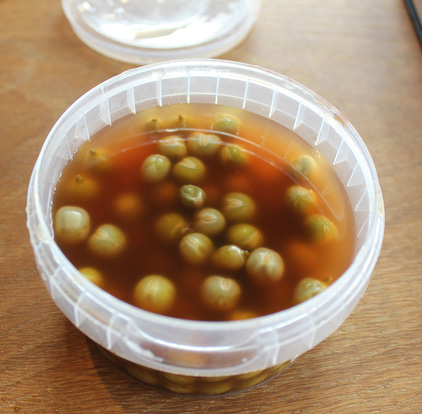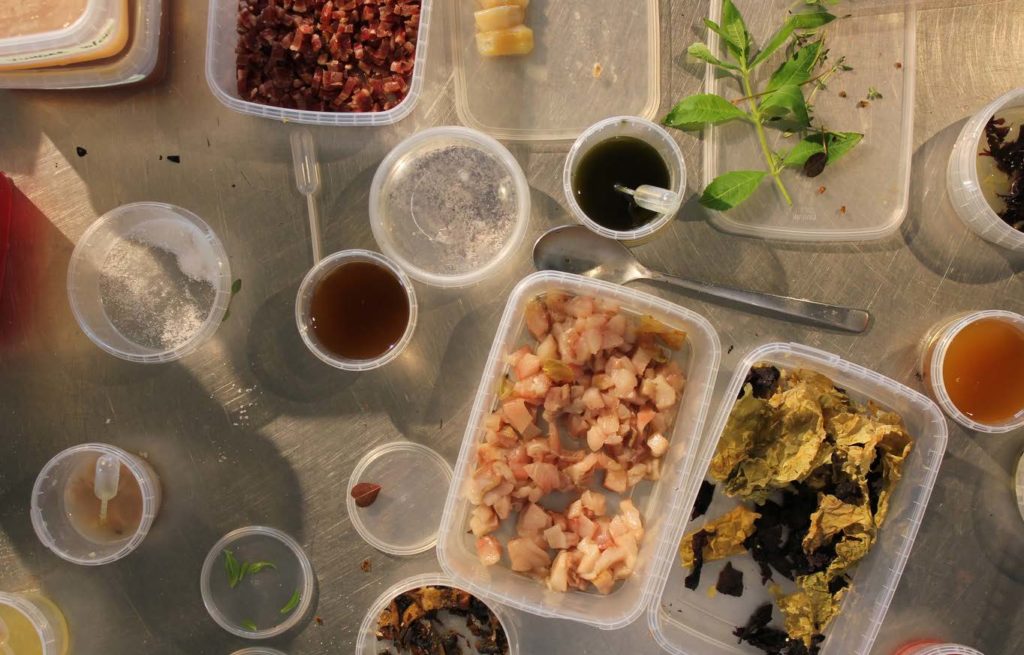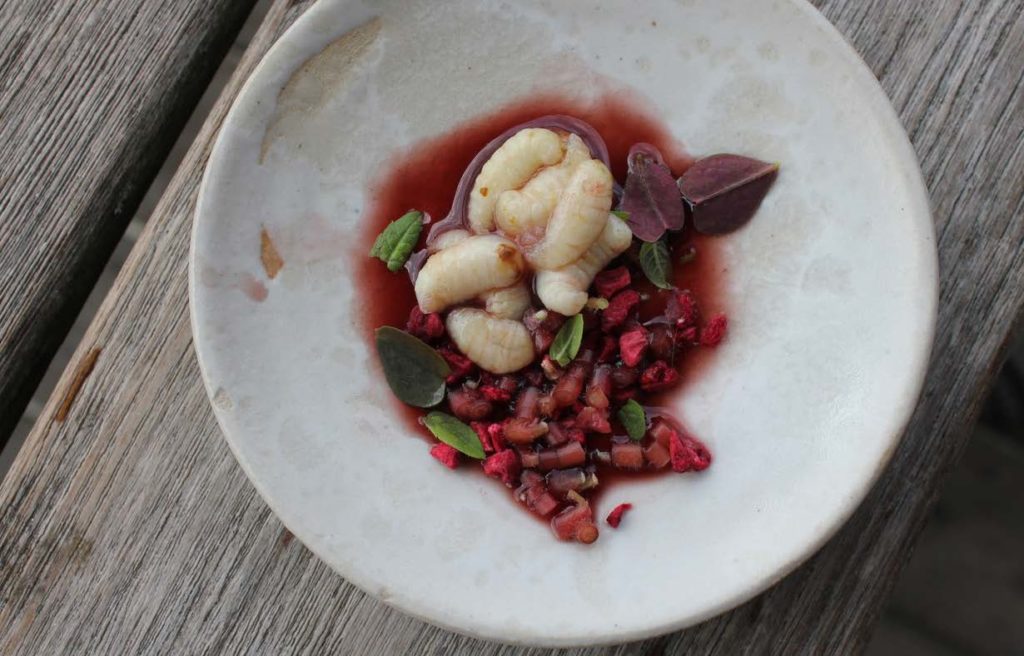posted by Sebastian Moreno Henao
As a Latin American, cebiches are very familiar to me. There are many varieties, from México to Chile, across Honduras, Guatemala, Ecuador, Colombia, Peru, and many other places as well.
It is the same with its etymology. A lot of theories have been proposed. One of them says it comes from a Spanish word: “cebo” which means “bait”, probably because of its similarity to chopped fish. Another proposes it comes from the word “escabeche”, which itself comes from an Arabic-Spanish word: “sukkabak” , a method to preserve meat in vinegar. And a third suggests that it comes from a Quechua (indigenous language from some South American tribes) word: “swichi” which means ‘fresh fish’ or ‘tender fish’. It is also due to these different etymology that one can find so many variations in the spelling.
The many forms of this traditional dish share one common trait, which is how acids can transform the proteins in food without applying any source of heat, and in a short period of time. We were interested in playing with this principle with other techniques and ingredients we use, such as vinegars, kombucha, curing, and infused oils.
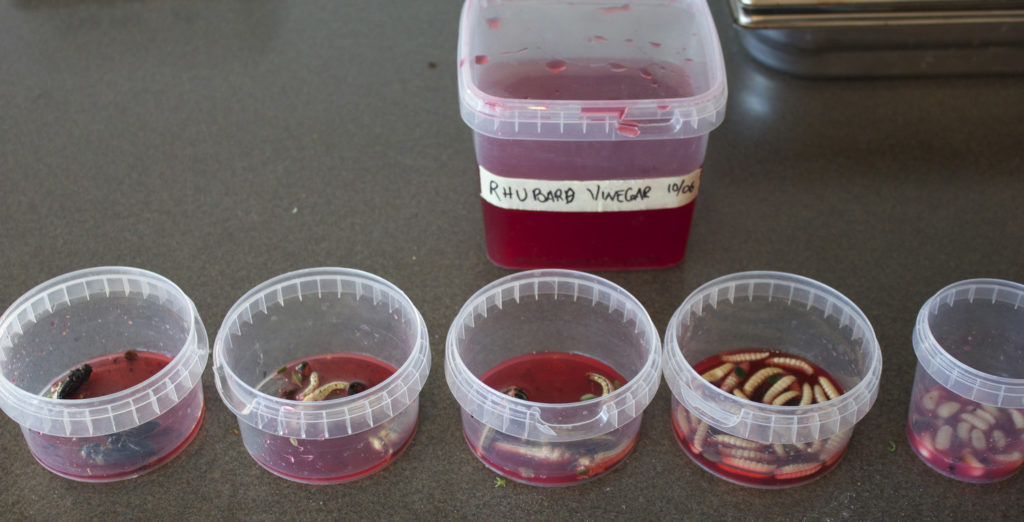
In cebiches, everything is about pH. Proteins change because of acid – the introduction of new hydrogen atoms disrupts the hydrogen bonding within and between amino acid chains. Acids thus denature the proteins’ quaternary and tertiary structures (the specific shapes that emerge as a result of hydrogen and other bonds), leaving them in loose strands and allowing them to reconfigure in new ways. This is the mechanism that transforms the texture of protein-rich food.
For our acids, we used 4 different vinegars: strawberry, rhubarb, cucumber, and beer. Additionally we made two novel acids by fusing chicha and kombucha. Chicha is a traditional Latin fermented beverage from Central America and the northern part of South America made from corn; the resulting chicha kombuchas were surprisingly nice.
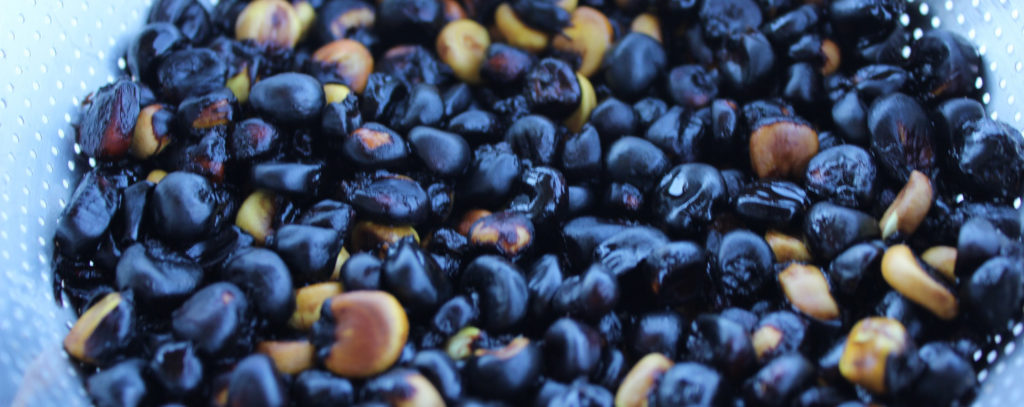
To go with our different acids, we chose five different types of proteins: the traditional fish and shellfish, always used in Latin cebiches; red meat, very common, which we lightly cured to make it a bit more interesting; and two more rare ingredients if we speak about cebiches: insects and legumes. So here they are, the chosen ones: mackerel, razor clams, beef loin, green peas, and bee larvae.
We also made some different oils and salts as seasonings, with products like lemon thyme, lemon verbena, berries, and roasted koji (yes, koji – what a surprise!).
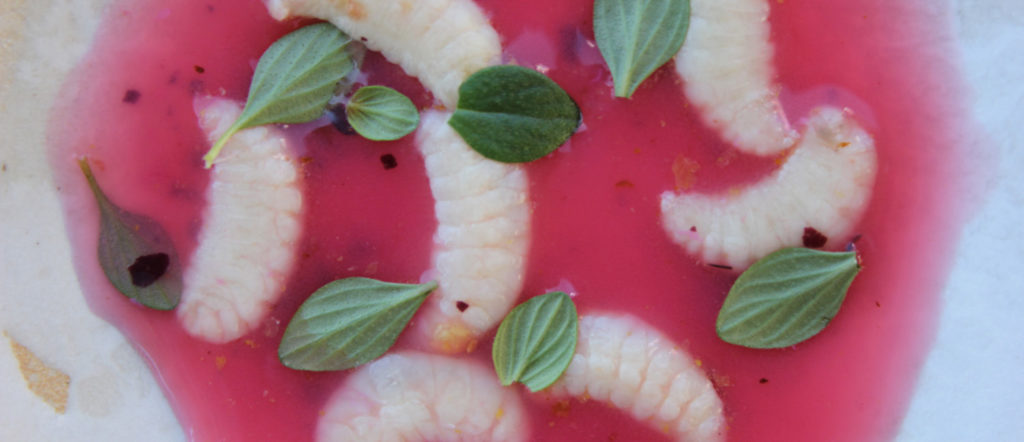
The results were very intriguing. Timing is one of the most important aspects of this technique: the longer the protein is in contact with vinegar, the more dramatic the change on its ‘cookedness’ will be – even within a range of a couple minutes. We saw this happen in many ways.
First, the most close to tradition. The razor clams were marinated in cucumber vinegar for 7 minutes, together with some sugar kelp and søl and dressed with lemon verbena oil and salt. The razor clam was excellent with a good firm texture, while the seaweeds were gummy and didn’t add to the dish, so we removed them in later versions.
The mackerel was put into a strawberry vinegar also for 7 minutes, with cranberry oil, lemon verbena leaves and mackerel skins.
The meat, as I told you before, was cured – with salt and brown sugar, to balance the tastes while still optimizing the drawing out of water from the flesh. We used stronger seasonings for this one: beer vinegar (for about 10 minutes), roasted koji oil and clove root. We didn’t need to put more salt because of the cure.
The peas we marinated in the chicha-kombucha for 24 hours and their colour, flavour and texture changed completely. We dressed them with quince oil and some raw peas to make a contrast with other flavours. But in the end, we decided to dress them simply to show the unique crisp yet soft texture of the ‘cooked peas’ on their own.
The bee larvae gained a slightly firmer external layer through contact with the vinegar, while retaining their creamy center, almost like a spherification; but if we let them stay more than just 3 minutes in the vinegar, the layer became thicker and thicker and the larvae became less creamy and nice to eat.
It was interesting to see how the different types of protein responded to the different acids, giving pretty diverse results from the same process. Overall, a very versatile technique that we can use on different ingredients around the world.
Plus, the mise en place was great.
Here’s a recipe for our favourite.
Bee Larvae Cebiche
Bee Larvae 15 g
Rhubarb Vinegar 100 ml
Lemon Thyme 3 g
Freeze-dried Lingonberries 5 g
Red Oxalis Stems 3 g
Søl Salt 5 g
Pick lemon thyme leaves and chop dried lingon-berries and oxalis stems very finely.
Pull the bee larvae from the freezer and defrost for 3 minutes. Add them to the vinegar and season with salt. Wait another 3 minutes.
Take the bee larvae out from the vinegar and dress them with the other ingredients (stems, lingon-berries and lemon thyme).
Enjoy a delicious bee larvae cebiche!
References
“Diccionario Panhispánico de Dudas. ” Real Academia Española . <http://lema.rae.es/>. 10.2005. 18.7.2013
Katz, Sandor E. The Art of Fermentation. USA: Chelsea Green, 2012.
Multiple. “Cebiche”. Wikipedia . <https://es.wikipedia.org/wiki/Cebiche>. 7.7.2013.
Unknown. “Cuál es el origen de la palabra ‘Ceviche’?”. Planeta curioso . <http://www.planetacurioso.com/2007/07/20/cual-es-el-origen-de-la-palabra-ceviche/>. 20.7.2007. 7.7.2013.
annette1402. “Etimologia Del Ceviche”. Buenas tareas . <http://www.buenastareas.com/ensayos/Etimologia-Del-Ceviche/2545655.html>. 07.2011. 7.7.2013.

